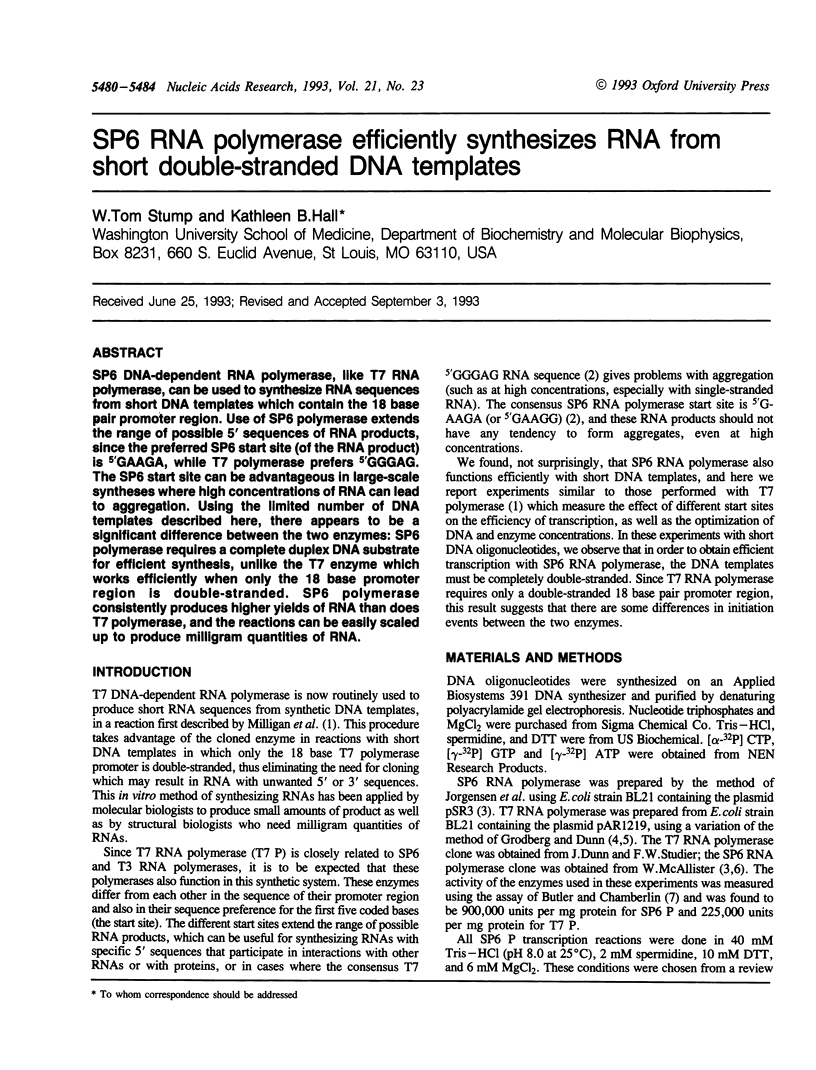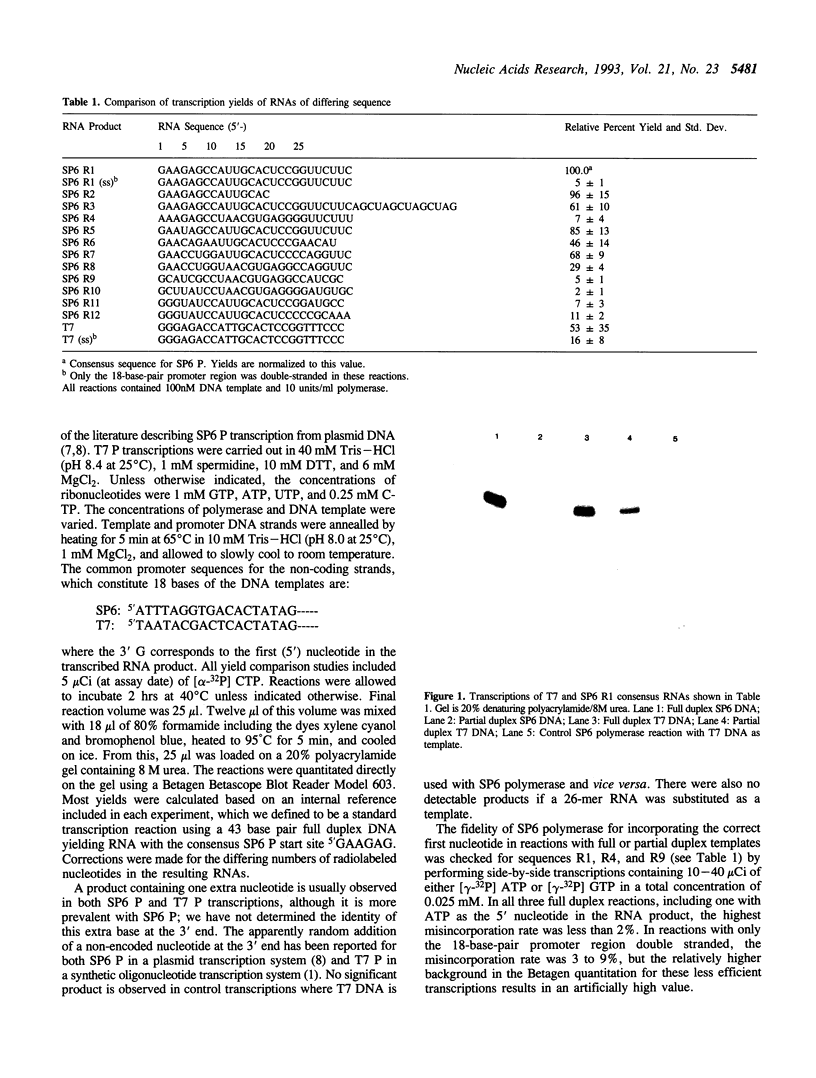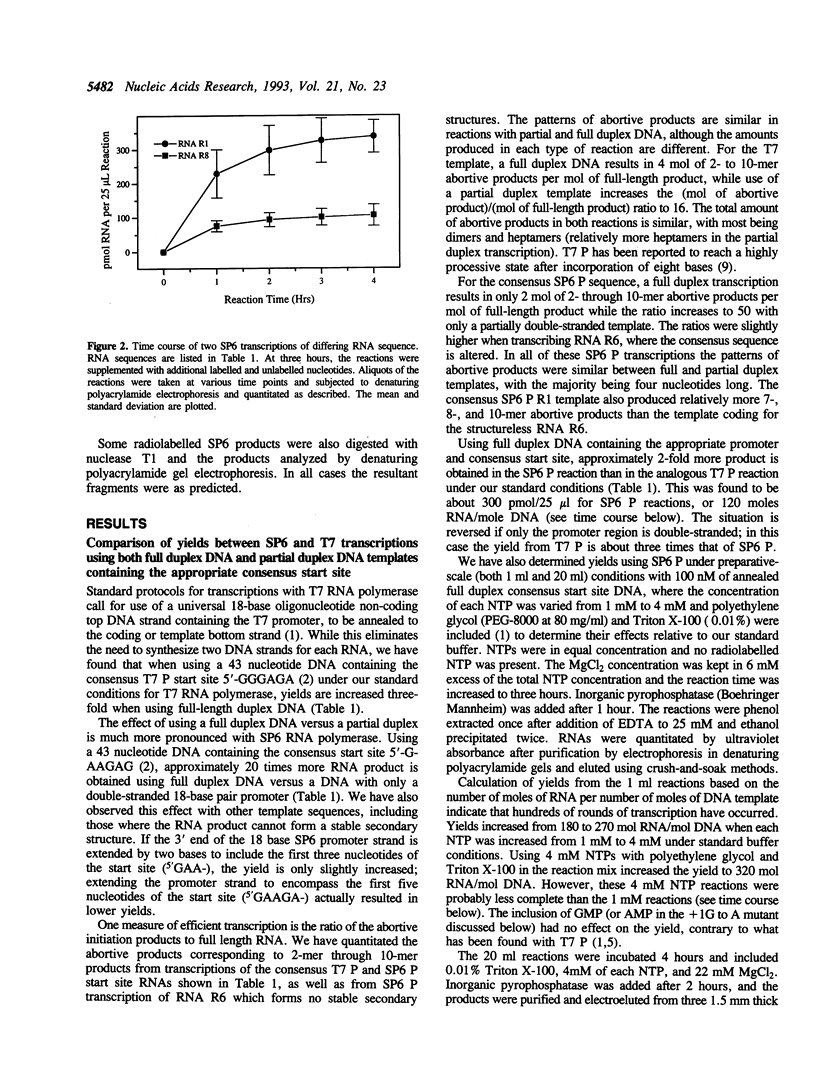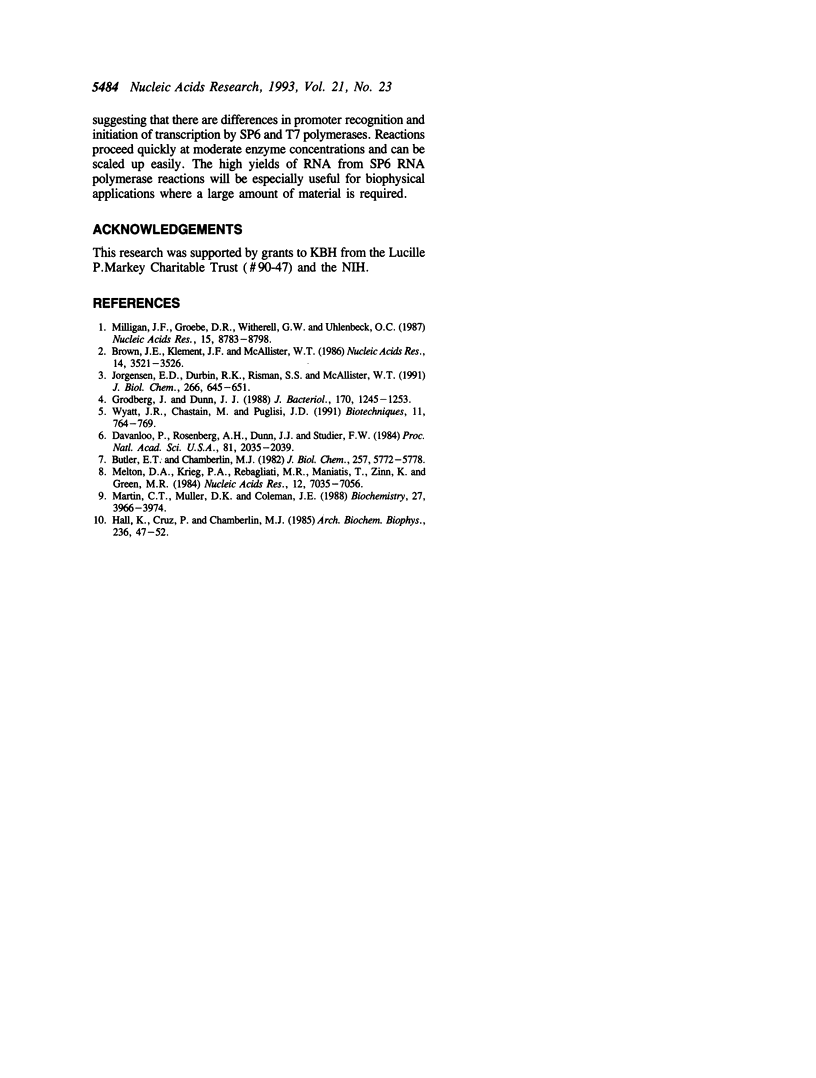Abstract
SP6 DNA-dependent RNA polymerase, like T7 RNA polymerase, can be used to synthesize RNA sequences from short DNA templates which contain the 18 base pair promoter region. Use of SP6 polymerase extends the range of possible 5' sequences of RNA products, since the preferred SP6 start site (of the RNA product) is 5'GAAGA, while T7 polymerase prefers 5'GGGAG. The SP6 start site can be advantageous in large-scale syntheses where high concentrations of RNA can lead to aggregation. Using the limited number of DNA templates described here, there appears to be a significant difference between the two enzymes: SP6 polymerase requires a complete duplex DNA substrate for efficient synthesis, unlike the T7 enzyme which works efficiently when only the 18 base promoter region is double-stranded. SP6 polymerase consistently produces higher yields of RNA than does T7 polymerase, and the reactions can be easily scaled up to produce milligram quantities of RNA.
Full text
PDF




Images in this article
Selected References
These references are in PubMed. This may not be the complete list of references from this article.
- Brown J. E., Klement J. F., McAllister W. T. Sequences of three promoters for the bacteriophage SP6 RNA polymerase. Nucleic Acids Res. 1986 Apr 25;14(8):3521–3526. doi: 10.1093/nar/14.8.3521. [DOI] [PMC free article] [PubMed] [Google Scholar]
- Butler E. T., Chamberlin M. J. Bacteriophage SP6-specific RNA polymerase. I. Isolation and characterization of the enzyme. J Biol Chem. 1982 May 25;257(10):5772–5778. [PubMed] [Google Scholar]
- Davanloo P., Rosenberg A. H., Dunn J. J., Studier F. W. Cloning and expression of the gene for bacteriophage T7 RNA polymerase. Proc Natl Acad Sci U S A. 1984 Apr;81(7):2035–2039. doi: 10.1073/pnas.81.7.2035. [DOI] [PMC free article] [PubMed] [Google Scholar]
- Grodberg J., Dunn J. J. ompT encodes the Escherichia coli outer membrane protease that cleaves T7 RNA polymerase during purification. J Bacteriol. 1988 Mar;170(3):1245–1253. doi: 10.1128/jb.170.3.1245-1253.1988. [DOI] [PMC free article] [PubMed] [Google Scholar]
- Hall K., Cruz P., Chamberlin M. J. Extensive synthesis of poly[r(G-C)] using Escherichia coli RNA polymerase. Arch Biochem Biophys. 1985 Jan;236(1):47–51. doi: 10.1016/0003-9861(85)90604-6. [DOI] [PubMed] [Google Scholar]
- Jorgensen E. D., Durbin R. K., Risman S. S., McAllister W. T. Specific contacts between the bacteriophage T3, T7, and SP6 RNA polymerases and their promoters. J Biol Chem. 1991 Jan 5;266(1):645–651. [PubMed] [Google Scholar]
- Martin C. T., Muller D. K., Coleman J. E. Processivity in early stages of transcription by T7 RNA polymerase. Biochemistry. 1988 May 31;27(11):3966–3974. doi: 10.1021/bi00411a012. [DOI] [PubMed] [Google Scholar]
- Melton D. A., Krieg P. A., Rebagliati M. R., Maniatis T., Zinn K., Green M. R. Efficient in vitro synthesis of biologically active RNA and RNA hybridization probes from plasmids containing a bacteriophage SP6 promoter. Nucleic Acids Res. 1984 Sep 25;12(18):7035–7056. doi: 10.1093/nar/12.18.7035. [DOI] [PMC free article] [PubMed] [Google Scholar]
- Milligan J. F., Groebe D. R., Witherell G. W., Uhlenbeck O. C. Oligoribonucleotide synthesis using T7 RNA polymerase and synthetic DNA templates. Nucleic Acids Res. 1987 Nov 11;15(21):8783–8798. doi: 10.1093/nar/15.21.8783. [DOI] [PMC free article] [PubMed] [Google Scholar]
- Wyatt J. R., Chastain M., Puglisi J. D. Synthesis and purification of large amounts of RNA oligonucleotides. Biotechniques. 1991 Dec;11(6):764–769. [PubMed] [Google Scholar]



